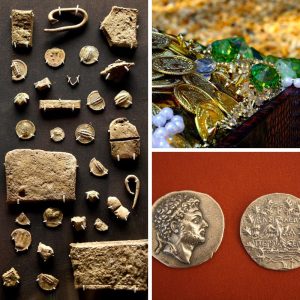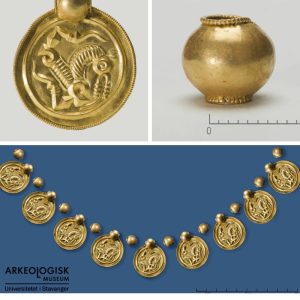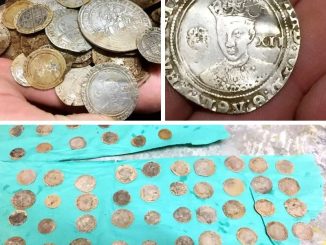
One of the highlights of an exhibition held in 2013 entitled ‘Bronze Age. Europe without Borders. Fourth – First millennia BC’, is a set of impressive artifacts known as the Eberswalde Hoard. The exhibition, held at the State Hermitage Museum in the Russian city of St. Petersburg, is reported to have contained over 1700 pieces of works that are said to have hailed from various parts of Europe – Western, Central and Eastern, during the Bronze Age. The Eberswalde Hoard, which was unearthed in Germany, was one of the exhibition’s most priceless treasure troves.
Largest prehistoric collection of gold in Germany
The Eberswalde Hoard is said to be the largest prehistoric collection of gold objects discovered in Germany so far. The hoard consists of 81 ancient gold objects, including 60 wire arm spirals, eight gold bowls, and a gold ingot. The total weight of these objects is reported to be 2.6 kg. It is believed that they are from either the 11 th or 10 th century BC.
The original purpose or use of the Eberswalde Hoard is unclear, though one scholar has suggested that it was an assemblage of sacred objects. It has been argued, for example, that vases were the most common type of sacred offering during the Bronze Age. Additionally, vessels similar to those from the Eberswalde Hoard have also been found in other parts of Europe, including Zürich Altstetten in Switzerland, and Kasitchena, near Sofia, in Bulgaria. The Eberswalde treasure is believed to belong to the goldsmith known as Villena-type, originating in the Iberian Peninsula, for its resemblance to the Treasure of Villena.
Amazing Find with a Metal Detector – The Incredible Staffordshire Anglo-Saxon Gold Hoard
Archaeologists piece together fragments from Anglo-Saxon gold hoard revealing stunning relics
Ancient Trade Route reveals Prehistoric Inhabitants of Ireland preferred Exotic Gold
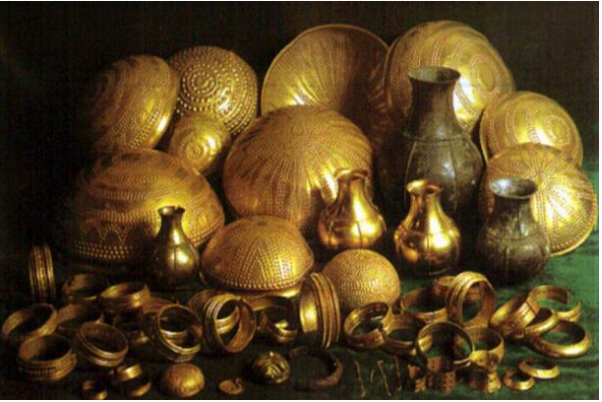
The Treasure of Villena
Discovery of the Eberswalde Hoard
The gold objects of the Eberswalde Hoard were discovered within a clay pot unearthed during an excavation in an area to the north-east of Berlin in 1913. The hoard was then taken to the Museum für Vor- und Frühgeschichte (‘Museum for Prehistory and Early History’) of the Berlin State Museums, where it was displayed as part of their collection. In 1939, the Second World War broke out, and following the occupation of Berlin by the Soviet Red Army, many valuable artifacts from Berlin’s museums, including the Eberswalde Hoard, were seized and transported to Moscow as war booty and as reparations for the damage inflicted during Hitler’s invasion of the Soviet Union. It is reported that the artifacts were re-discovered in 2004 in a secret depot in Moscow’s Pushkin Museum, and went on display in 2013 for the first time since its seizure by Soviet troops.
Seizure of the hoard
Despite the importance of the Eberswalde Hoard, it is but one of the many objects seized by Soviet forces from German museums at the end of the Second World War. It has been estimated that 2.5 million objects were seized by the victors of the war. According to the Russians, less than 10% of these looted materials are still in Russia. Between 1955 and 1958, around 1.5 million of these objects were given back to Germany, including 300 trainloads of precious works that were returned to the former East Germany as a gesture of friendship. The Germans, however, claim that a million objects are still unaccounted for, including the Eberswalde Hoard and the ‘Treasure of Priam’, objects discovered in 1873 at Hisarlik, Turkey, now presumed to be the site of Troy. Incidentally, these objects were smuggled out of Turkey by the archaeologist Hienrich Schliemann.
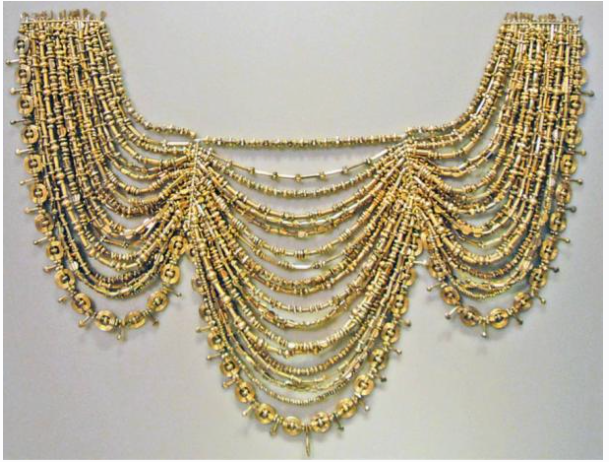
One of the treasures of Priam
It is perhaps only natural that Germany continued to seek the repatriation of these priceless artifacts from Russia. This, and Russia’s refusal to budge, became the focal point of the opening of the ‘Bronze Age. Europe without Borders. Fourth – First millennia BC’ exhibition. According to the reports, the opening of the exhibition was to be officiated jointly by the German chancellor, Angela Merkel, and the Russian president, Vladimir Putin. Each leader was also scheduled to give a speech during the ceremony. When it surfaced that Merkel was planning to use her speech to call for the return of the looted artifacts, the Russians decided to cancel the event. In the end, however, the event went ahead, with both leaders attending, though there was no joint opening and, needless to say, no speech by the German chancellor. For the time being, the Eberswalde Hoard will continue to remain in Russian hands as their booty of war

